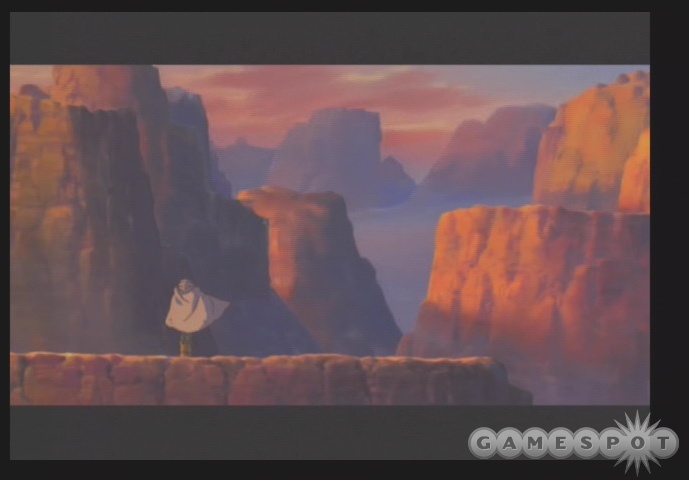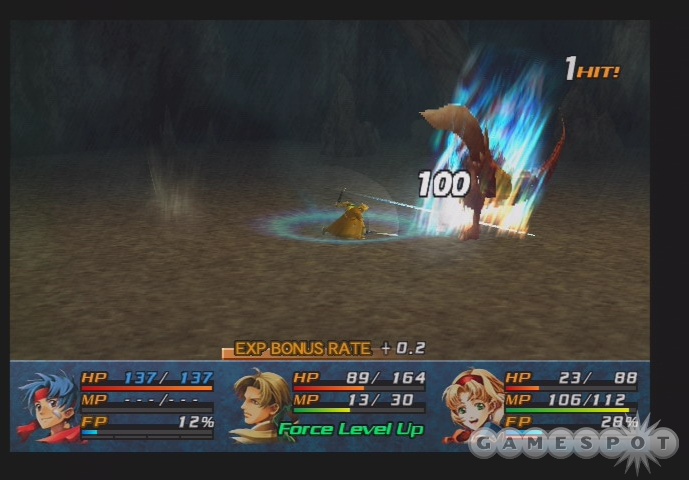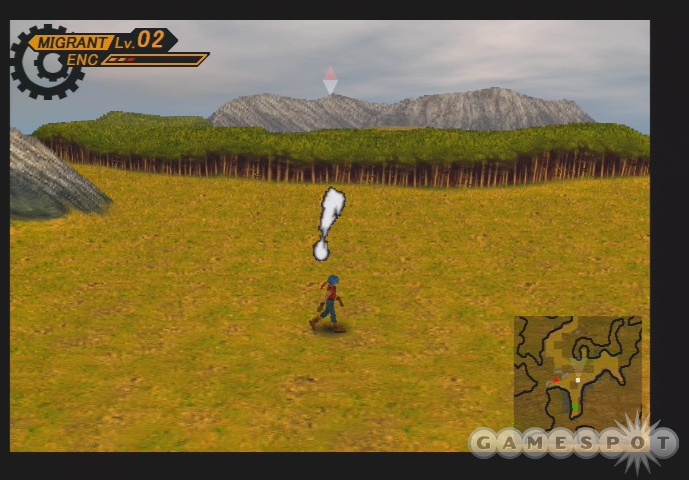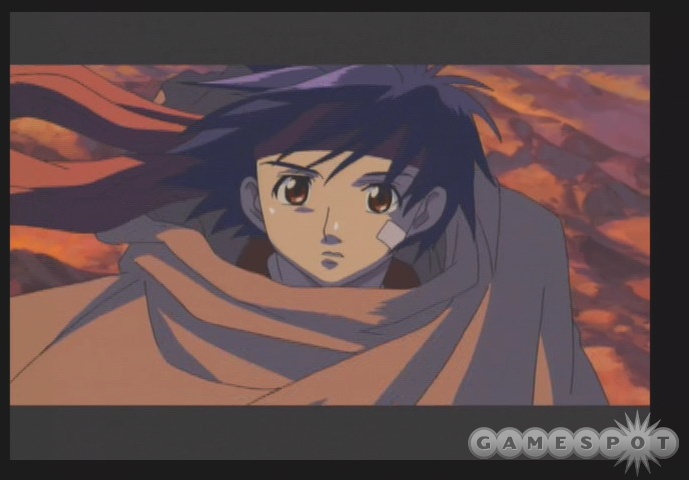The original Wild Arms was released for the PlayStation in those quiet days before Final Fantasy VII arrived on the scene--a solid little RPG that featured interesting puzzle-solving elements and a Wild West-styled world. The game spawned two sequels that appeared on the PlayStation and PlayStation 2, respectively, but Wild Arms Alter Code: F is a remake of the seminal title that started it all. The once-primitive, early 3D has been replaced by a more modern look, and certain new characters join the playable roster. The classic gameplay remains largely the same, and although certain elements haven't weathered the years all that well, fans of the series and dedicated RPG junkies will get good mileage out of this one.

The Wild Arms storyline has survived and is pretty much unchanged for the remake. The world of Filgaia is a land that's gradually being sapped of all its life, with crops failing more and more often, and green areas slowly turning to dust. The planet's demise began during a terrible war waged in the past, between the humanoid races and creatures called metal demons from another dimension intent on razing the earth and claiming it as their new home. The powerful Guardians of Filgaia lent their strength to the battle, but driving the demons away took most of their power, and now the natural order is starting to languish. Wild Arms follows the tale of three adventurers: Rudy, a quiet young man with the power to wield a mysterious gunlike weapon called an ARM; Jack, a devil-may-care treasure hunter that plumbs the depths of ancient ruins with his wisecracking wind-mouse companion Hanpan; and Cecilia, the young princess of Adelhyde who has the unique ability to commune with the long-lost Guardians.
The game begins with short introductory sequences that follow each of the main characters as they tend to their own pursuits and before they finally meet and unite to fight the return of the metal demons. These sequences are helpful, because they introduce you to not only the cast, but also to each member's unique abilities. Everyone has a special set of options called "tools" that they can use in towns and while moving through dungeons, and each character's tools are useful at different times. For example, Rudy initially possesses a set of bombs that he can use to clear obstacles like stones and enemies, while Cecilia has a staff that shoots a stream of flame that she can use to light torches, and Jack can send out Hanpan to press switches or collect treasure in places he couldn't ordinarily reach. You can gain a number of different tools for your party as you progress, and you'll need to constantly switch characters to utilize their abilities and make it through the many combat zones. Solving the puzzles you'll encounter generally isn't all that difficult, and it's a nice way to break up the frequent battles you'll run into as you explore.

Three characters can fight at one time against foes, and in addition to basic melee abilities, every individual has two categories of special powers they can use. One type of power can be triggered so long as you have enough ammunition or MP, like Rudy's attack cartridges for his ARM, Jack's sword skills, or Cecilia's crest magic. The other power is centered around a special force meter that gradually builds in battle as you fight and take damage. Gaining a certain percentage of force lets the character use a force power--like Jack's Accelerator, which ensures that he will act first the next time he's in battle. Each time you use a force power, your meter will deplete by 25 percent. There is another use for force, however. If you let the meter reach 100 percent, you'll trigger Condition Green, which helpfully wipes any negative status effects from that character. Between using your force power and the variety of skills you'll discover in the game (unlike other RPGs, you'll need to locate new powers and spells in the gameworld instead of gaining them automatically as you level), there's a good variety of things to do in battle. Even so, battles do tend to be rather slow-paced and not as snappy and streamlined as some modern games. For instance, skills take a while to play out, and the characters do a lot of useless milling around while waiting their turn. You'll also be running into fights quite a lot, though Wild Arms gives you a way to sneak out of some using the Migrant Level system.
The Migrant meter comes charged in the corner of the screen with a number of units. As you scamper about trying to save the world, an exclamation point will appear over your character's head. If you've got units in your Migrant meter, you have a couple of seconds to press the circle button, which drains a unit from the meter but lets you bypass the fight. It's a good system to use if you want to try to concentrate on traveling quickly, but battles are frequent enough that there's a chance you'll rapidly run out of meter units, and once that happens, you'll be required to fight. Thankfully, certain puzzle rooms are free of monster encounters, so you'll get a bit of a breather while you work out some solutions.

The most major and evident change is the graphical style, which trades the superdeformed characters of almost a decade ago and fits them with more current 3D. The towns and dungeons you'll visit have also been updated. The thing about the visual style is that, while it's certainly a far cry from the crude, early 3D the PlayStation original displayed, it's nothing that will blow you away, either. The characters are detailed in the anime style, but they aren't terribly intricate, and some of the animations are a bit on the clunky side. The environments tend to run the gamut of basic to somewhat drab, with lots of caverns and ruins dominated by a small and muted color palette. Enemies are somewhat better, particularly bosses, but these too are slightly restricted in terms of animation and movement. The sound remains solid, with the same eclectic, Western-inspired tunes that characterized the original, complete with strumming guitars and soulful whistling. The overall look of the game is a favorable improvement over the original without necessarily having the polish of some of its PS2 contemporaries.
Another change is that you can have up to six characters in your roster at a time. You can only use three at once, but if you have more fighters available, you can use a switch command to rotate a reserve character into the fray should you so desire. The extra characters you can recruit are largely optional, however. Getting them permanently into your party can only be done later in the game and requires a bit of effort on your part in locating them. Mostly you'll be adventuring with the original threesome. There's plenty of content to keep that threesome busy, with a storyline that can cover 30 hours or so, not including optional dungeons and bosses, plus hidden items and special powers, which can add quite a bit of time.

Wild Arms Alter Code: F is a good revisit to a classic RPG. The battle system remains a fairly neat thing to play with, and the storyline--featuring demons, elflike people, ancient technology, and swords and firearms all wrapped up in a world with a pseudo-Western feel--remains unique and interesting. Those most likely to enjoy Wild Arms probably already played the original, but if you don't mind revisiting a bit of RPG history, this remake is worth a peek.